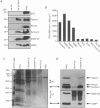Abstract
1. Release of neurotransmitter into the synaptic cleft is the last step in the chain of molecular events following the arrival of an action potential at the nerve terminal. The neurotransmitter exerts negative feedback on its own release. This inhibition would be most effective if exerted on the first step in this chain of events, i.e. a step that is mediated by membrane depolarization. Indeed, in numerous studies feedback inhibition was found to be voltage dependent. 2. The purpose of this study is to investigate whether the mechanism underlying feedback inhibition of transmitter release resides in interaction between the presynaptic autoreceptors and the exocytic apparatus, specifically the soluble NSF-attachment protein receptor (SNARE) complex. 3. Using rat synaptosomes we show that the muscarinic ACh autoreceptor (mAChR) is an integral component of the exocytic machinery. It interacts with syntaxin, synaptosomal-associated protein of 25 kDa (SNAP-25), vesicle-associated membrane protein (VAMP) and synaptotagmin as shown using both cross-linking and immunoprecipitation. 4. The interaction between mAChRs and both syntaxin and SNAP-25 is modulated by depolarization levels; binding is maximal at resting potential and disassembly occurs at higher depolarization. 5. This voltage-dependent interaction of mAChRs with the secretory core complex appears suitable for controlling the rapid, synchronous neurotransmitter release at nerve terminals.
Full text
PDF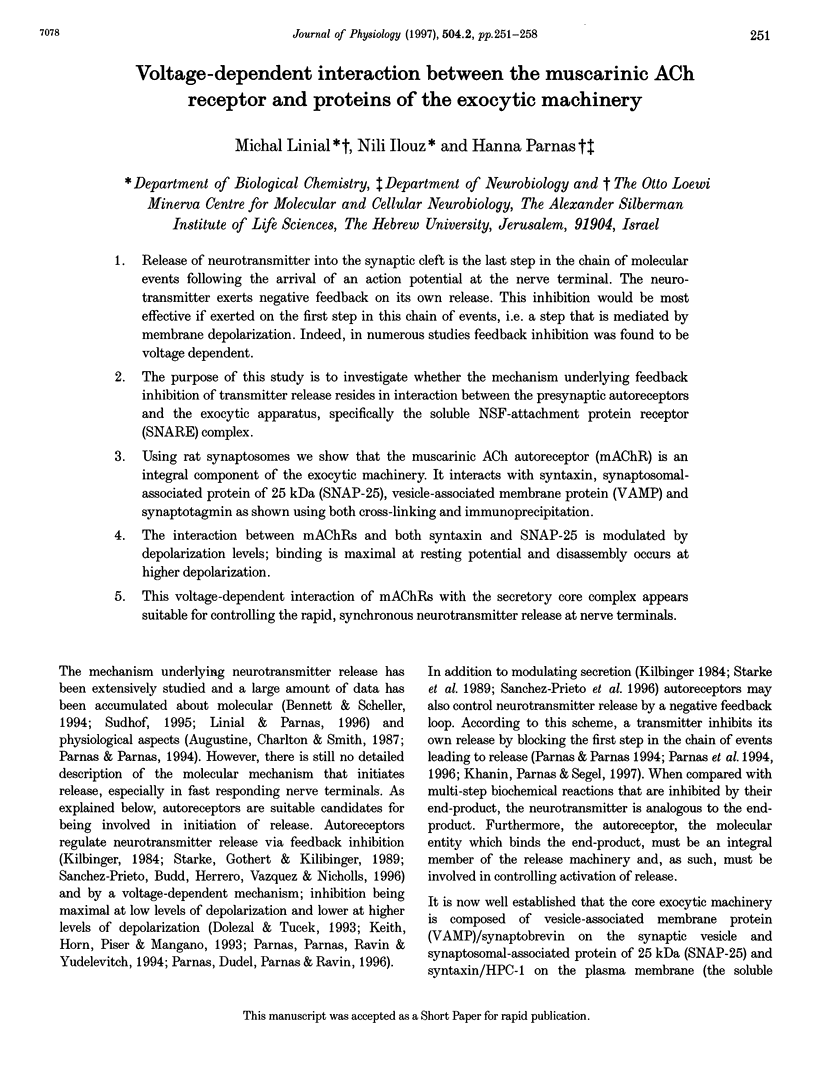
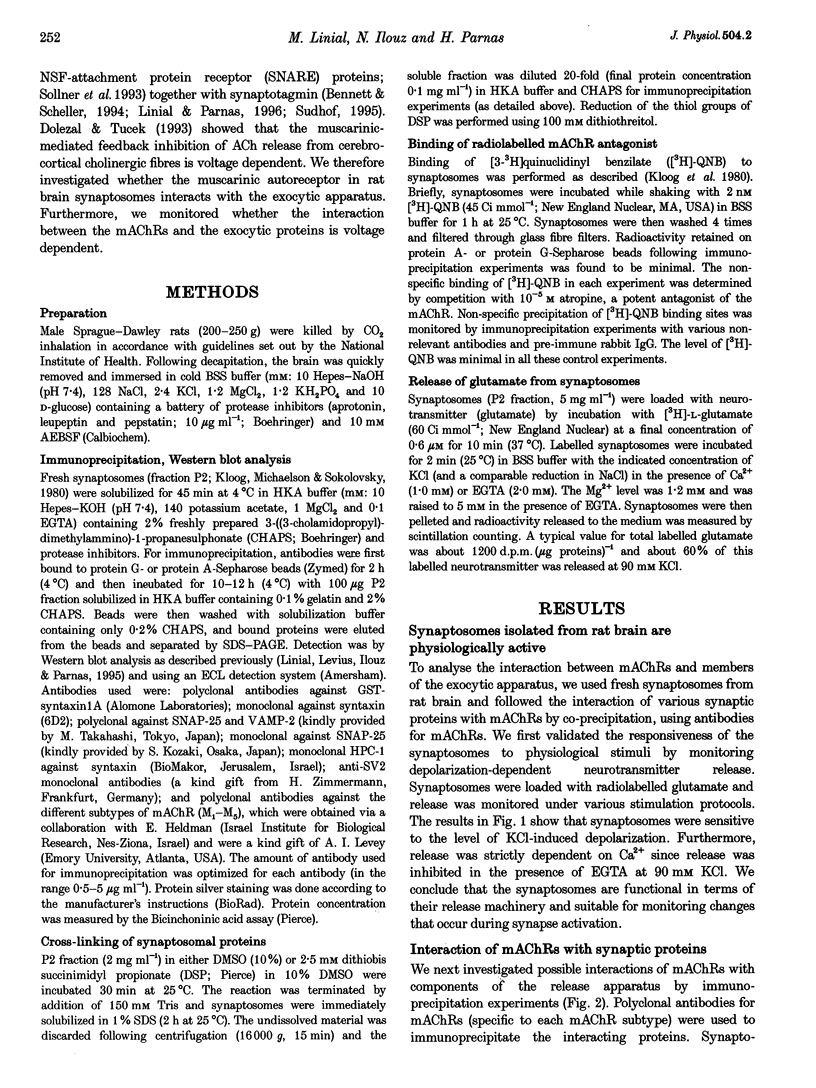

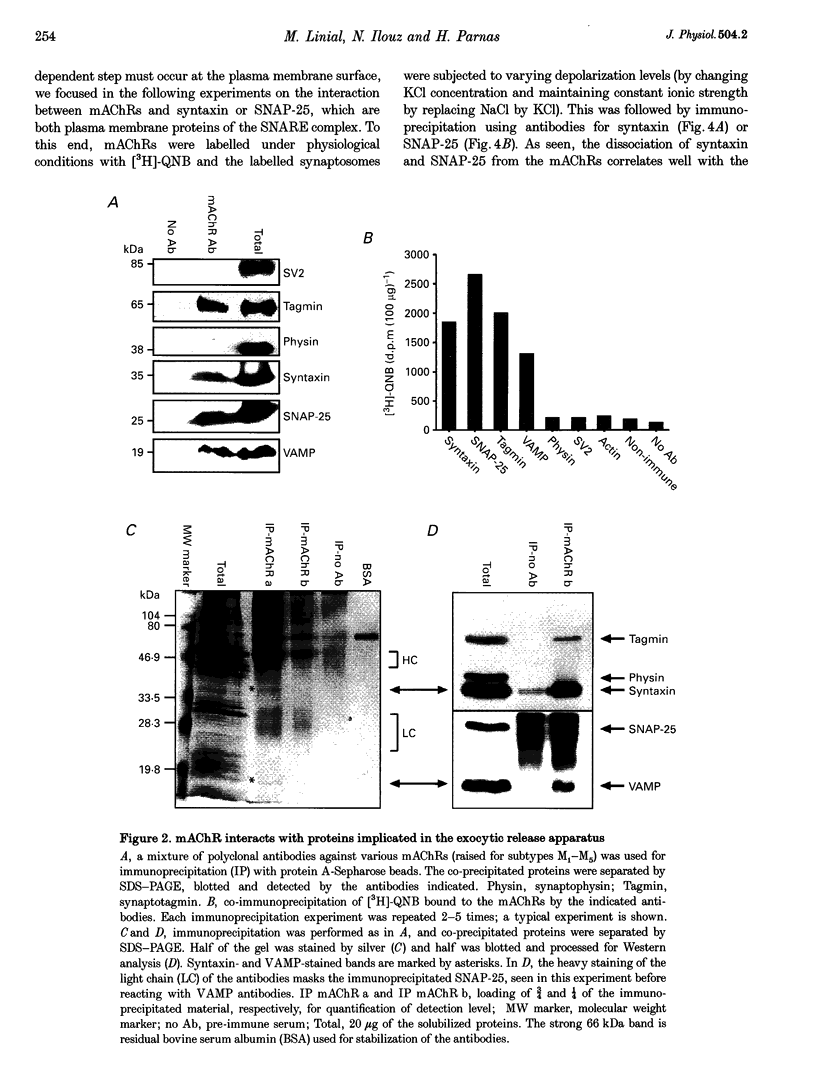
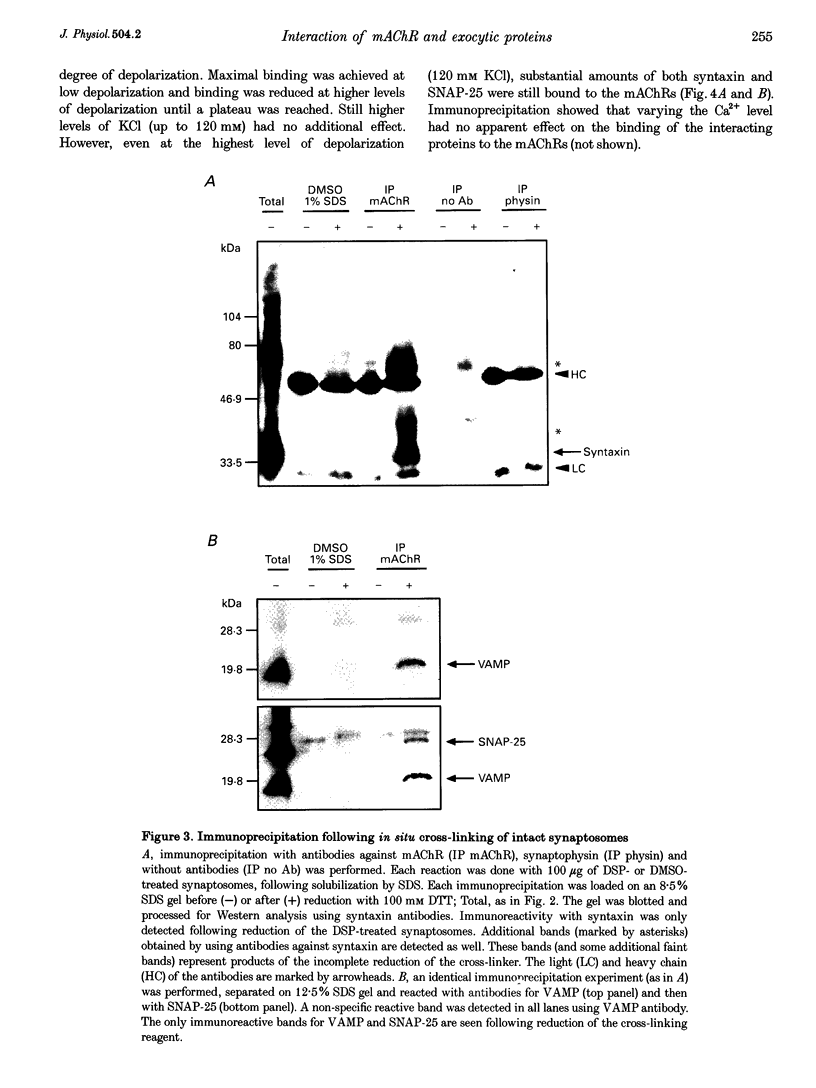
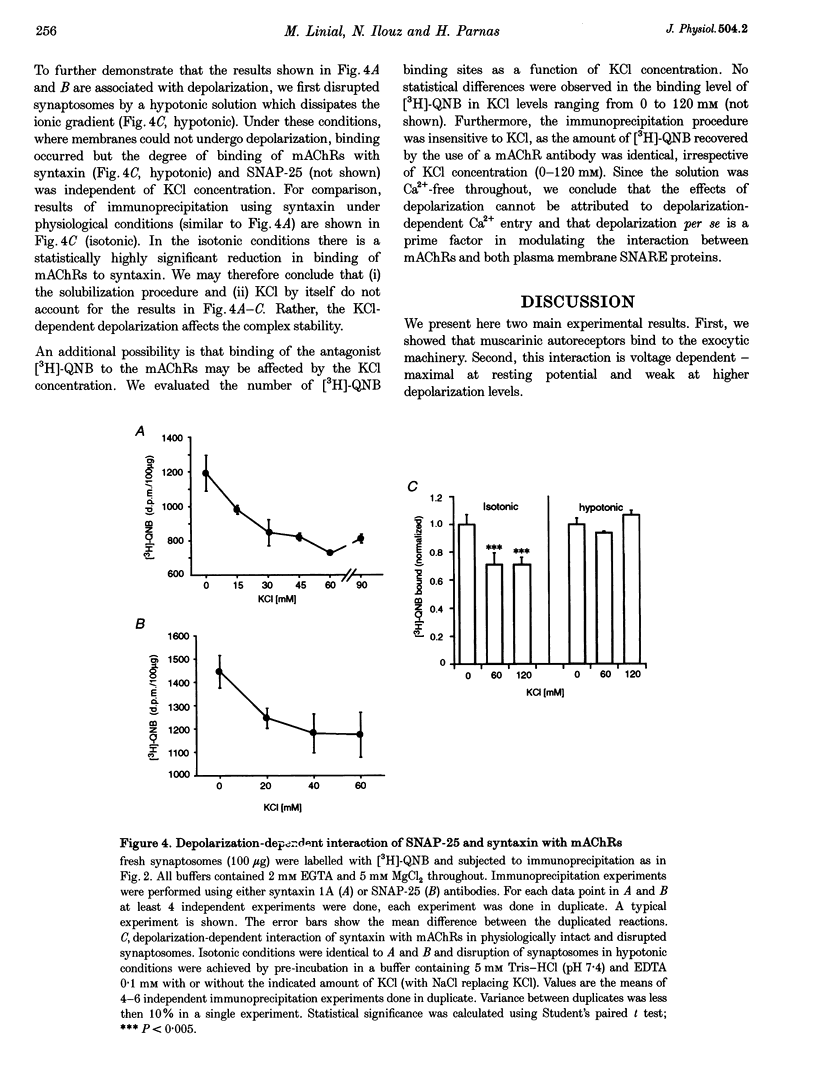
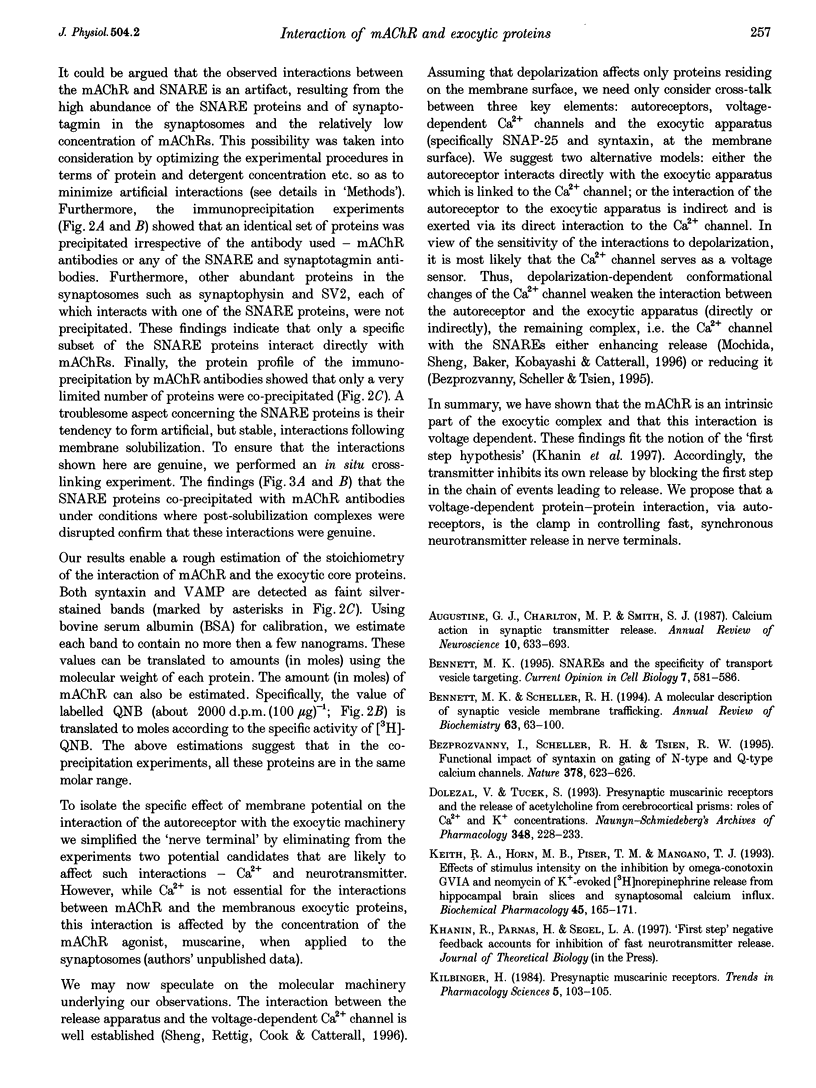
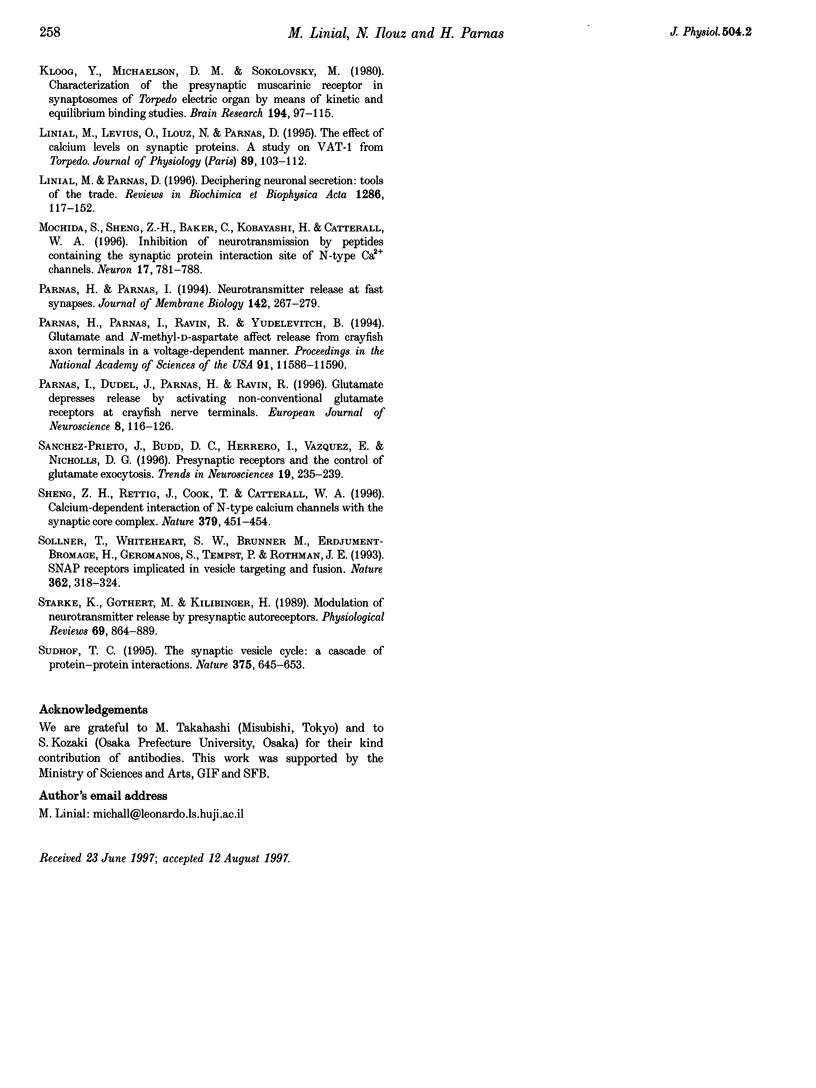
Images in this article
Selected References
These references are in PubMed. This may not be the complete list of references from this article.
- Augustine G. J., Charlton M. P., Smith S. J. Calcium action in synaptic transmitter release. Annu Rev Neurosci. 1987;10:633–693. doi: 10.1146/annurev.ne.10.030187.003221. [DOI] [PubMed] [Google Scholar]
- Bennett M. K. SNAREs and the specificity of transport vesicle targeting. Curr Opin Cell Biol. 1995 Aug;7(4):581–586. doi: 10.1016/0955-0674(95)80016-6. [DOI] [PubMed] [Google Scholar]
- Bennett M. K., Scheller R. H. A molecular description of synaptic vesicle membrane trafficking. Annu Rev Biochem. 1994;63:63–100. doi: 10.1146/annurev.bi.63.070194.000431. [DOI] [PubMed] [Google Scholar]
- Bezprozvanny I., Scheller R. H., Tsien R. W. Functional impact of syntaxin on gating of N-type and Q-type calcium channels. Nature. 1995 Dec 7;378(6557):623–626. doi: 10.1038/378623a0. [DOI] [PubMed] [Google Scholar]
- Dolezal V., Tucek S. Presynaptic muscarinic receptors and the release of acetylcholine from cerebrocortical prisms: roles of Ca2+ and K+ concentrations. Naunyn Schmiedebergs Arch Pharmacol. 1993 Sep;348(3):228–233. doi: 10.1007/BF00169149. [DOI] [PubMed] [Google Scholar]
- Keith R. A., Horn M. B., Piser T. M., Mangano T. J. Effects of stimulus intensity on the inhibition by omega-conotoxin GVIA and neomycin of K(+_-evoked [3H]norepinephrine release from hippocampal brain slices and synaptosomal calcium influx. Biochem Pharmacol. 1993 Jan 7;45(1):165–171. doi: 10.1016/0006-2952(93)90389-e. [DOI] [PubMed] [Google Scholar]
- Kloog Y., Michaelson D. M., Sokolovsky M. Characterization of the presynaptic muscarinic receptor in synaptosomes of Torpedo electric organ by means of kinetic and equilibrium binding studies. Brain Res. 1980 Jul 21;194(1):97–115. doi: 10.1016/0006-8993(80)91321-9. [DOI] [PubMed] [Google Scholar]
- Linial M., Levius O., Ilouz N., Parnas D. The effect of calcium levels on synaptic proteins. A study on VAT-1 from Torpedo. J Physiol Paris. 1995;89(2):103–112. doi: 10.1016/0928-4257(96)80557-2. [DOI] [PubMed] [Google Scholar]
- Linial M., Parnas D. Deciphering neuronal secretion: tools of the trade. Biochim Biophys Acta. 1996 Jun 10;1286(2):117–152. doi: 10.1016/0304-4157(96)00007-x. [DOI] [PubMed] [Google Scholar]
- Mochida S., Sheng Z. H., Baker C., Kobayashi H., Catterall W. A. Inhibition of neurotransmission by peptides containing the synaptic protein interaction site of N-type Ca2+ channels. Neuron. 1996 Oct;17(4):781–788. doi: 10.1016/s0896-6273(00)80209-3. [DOI] [PubMed] [Google Scholar]
- Parnas H., Parnas I. Neurotransmitter release at fast synapses. J Membr Biol. 1994 Dec;142(3):267–279. doi: 10.1007/BF00233434. [DOI] [PubMed] [Google Scholar]
- Parnas H., Parnas I., Ravin R., Yudelevitch B. Glutamate and N-methyl-D-aspartate affect release from crayfish axon terminals in a voltage-dependent manner. Proc Natl Acad Sci U S A. 1994 Nov 22;91(24):11586–11590. doi: 10.1073/pnas.91.24.11586. [DOI] [PMC free article] [PubMed] [Google Scholar]
- Parnas I., Dudel J., Parnas H., Ravin R. Glutamate depresses release by activating non-conventional glutamate receptors at crayfish nerve terminals. Eur J Neurosci. 1996 Jan;8(1):116–126. doi: 10.1111/j.1460-9568.1996.tb01172.x. [DOI] [PubMed] [Google Scholar]
- Sheng Z. H., Rettig J., Cook T., Catterall W. A. Calcium-dependent interaction of N-type calcium channels with the synaptic core complex. Nature. 1996 Feb 1;379(6564):451–454. doi: 10.1038/379451a0. [DOI] [PubMed] [Google Scholar]
- Starke K., Göthert M., Kilbinger H. Modulation of neurotransmitter release by presynaptic autoreceptors. Physiol Rev. 1989 Jul;69(3):864–989. doi: 10.1152/physrev.1989.69.3.864. [DOI] [PubMed] [Google Scholar]
- Sánchez-Prieto J., Budd D. C., Herrero I., Vázquez E., Nicholls D. G. Presynaptic receptors and the control of glutamate exocytosis. Trends Neurosci. 1996 Jun;19(6):235–239. doi: 10.1016/0166-2236(96)10031-x. [DOI] [PubMed] [Google Scholar]
- Söllner T., Whiteheart S. W., Brunner M., Erdjument-Bromage H., Geromanos S., Tempst P., Rothman J. E. SNAP receptors implicated in vesicle targeting and fusion. Nature. 1993 Mar 25;362(6418):318–324. doi: 10.1038/362318a0. [DOI] [PubMed] [Google Scholar]
- Südhof T. C. The synaptic vesicle cycle: a cascade of protein-protein interactions. Nature. 1995 Jun 22;375(6533):645–653. doi: 10.1038/375645a0. [DOI] [PubMed] [Google Scholar]



